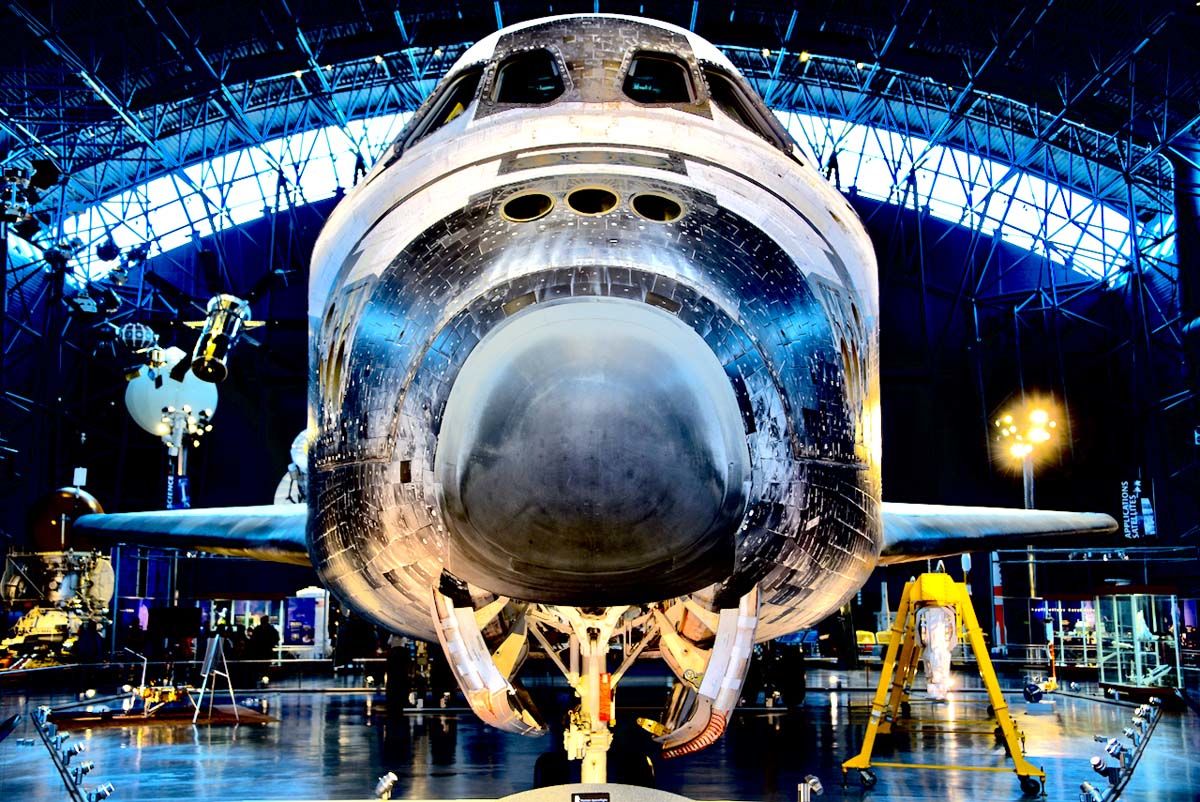One of Virginia’s crown jewels of tourist attractions, the Discovery Space Shuttle, could be blasting off somewhere else.
This article was reprinted with permission from Virginia Mercury.
One of Virginia’s crown jewels of tourist attractions, the Discovery Space Shuttle, could be blasting off somewhere else as U.S. Sens. Mark Warner and Tim Kaine seek to prevent the move from its home in Virginia to Texas.
The effort to relocate the space shuttle comes as support has increased for moving it to the Johnson Space Center in Houston, Texas, which is considered central to the United States’ human spaceflight program. Republican U.S. Sens. John Cornyn and Ted Cruz, both from Texas, are pushing the relocation effort. The ship has been at the Steven F. Udvar-Hazy Center of the Smithsonian Institution’s National Air and Space Museum in Chantilly since 2012.
Last week, the senators wrote a letter to Senate appropriators, hoping to block federal funding included in the Big Beautiful Bill Act for relocating the shuttle, arguing that it would waste taxpayer dollars, put it at risk of damage and diminish public access.
The Smithsonian estimated that transporting Discovery could cost more than $50 million, with another $325 million needed for planning, exhibit reconstruction and new facilities, the letter states, exceeding the $85 million appropriated in the Act.
“From a public access standpoint, the Udvar-Hazy Center, located in the Washington, D.C. region, offers free public admission and draws millions of visitors annually, including students, veterans, and international tourists,” Kaine and Warner wrote. “The Smithsonian provides Discovery with professional stewardship and global visibility. The Smithsonian is unique among museums for providing visitors with access to a national treasure meant to inspire the American public without placing economic barriers.”
The center has become one of the top 20 most-visited museums in North America, garnering more than a million visitors per year, according to the Smithsonian.
Between 1984 and 2012, Discovery orbited the Earth almost 150 million miles more than its two predecessors, flying 39 missions. The ship, named for renowned sailing ships of exploration, was transferred to the Smithsonian by NASA in April 2012.
Recently, the Smithsonian’s National Air and Space Museum announced plans to expand the center in Northern Virginia, following the last major construction project in 2003. The project will enable the Smithsonian to showcase more artifacts and new acquisitions, likely enhancing the shuttle and the center’s offerings.
Construction is expected to be finished by the end of 2028.
In an August interview, Cornyn said the then-NASA Administrator and former Discovery astronaut Charles Bolden Jr. gave Houston “short shrift” when it came to considering the city as one of the homes for four retiring shuttles in 2010. Bolden assigned the remaining three shuttles to California, Florida and New York.
However, Cornyn believed the Johnson Space Center is “a natural place” for the ship to be located, as it is the home of human spaceflight.
As part of the process to have Houston reconsidered, the Act required the current administrator to make a new determination, which favored Houston. Secretary of Transportation Sean Duffy, nominated by President Donald Trump, is serving as the acting administrator.
Cornyn said he hopes that when current and future generations see the shuttle, they will find inspiration in subjects related to the space industry.
“Seeing this firsthand and understanding its significance will hopefully make a very positive influence on them and their life, and it would be great for tourism and the economy,” Cornyn said.
In a statement to the Mercury, the Smithsonian said it owns the Discovery and holds it, along with all its collections, in trust for the nation.
“The Smithsonian has a unique responsibility to properly manage, preserve, and make accessible the collections in its care for current and future generations to appreciate, enjoy, and study,” the research institute stated. “The Smithsonian carries out its stewardship responsibilities through systematic collections management policies, procedures, and plans based on professional and discipline-specific best practices. The Smithsonian will carefully evaluate any request to move Discovery in light of these obligations.”
